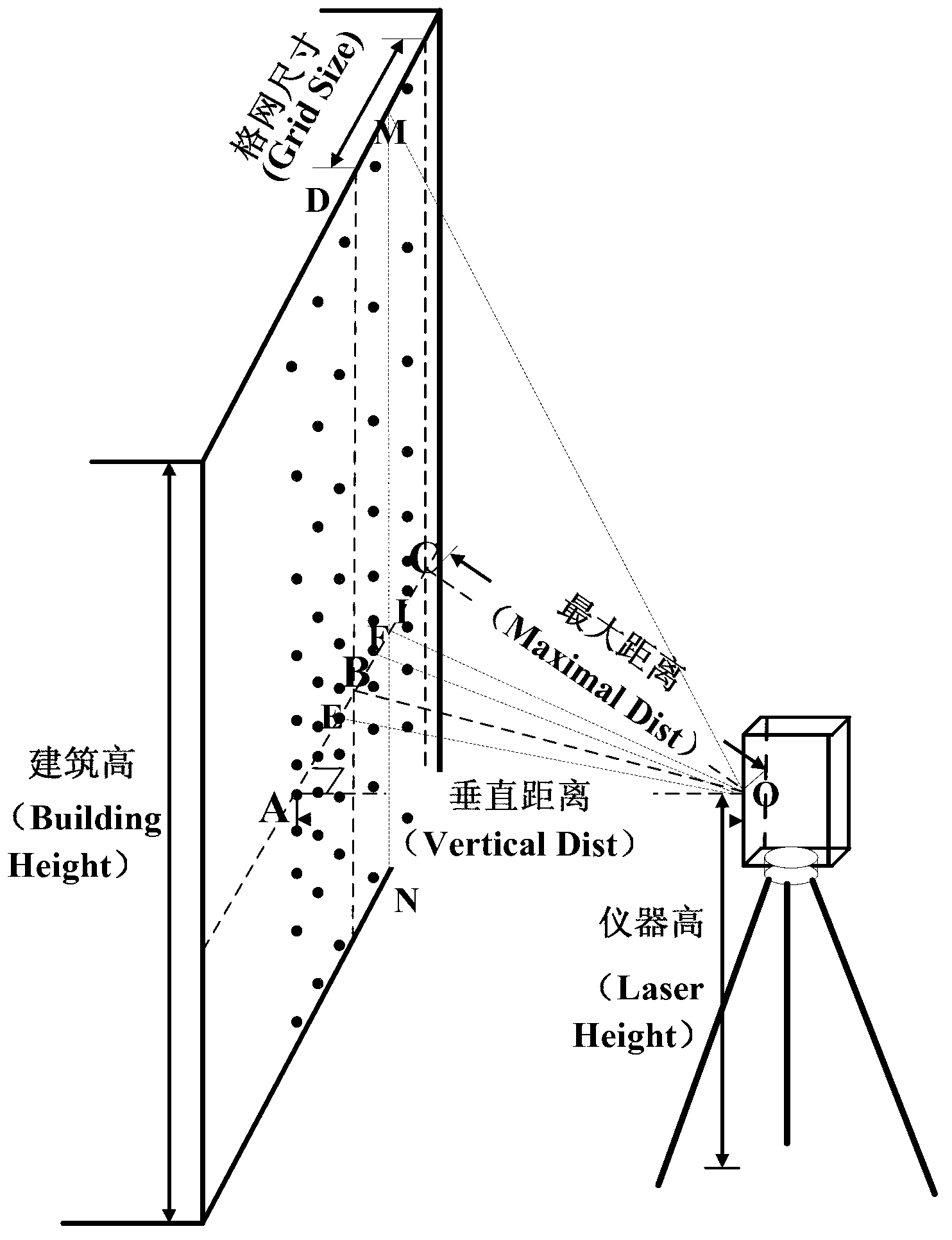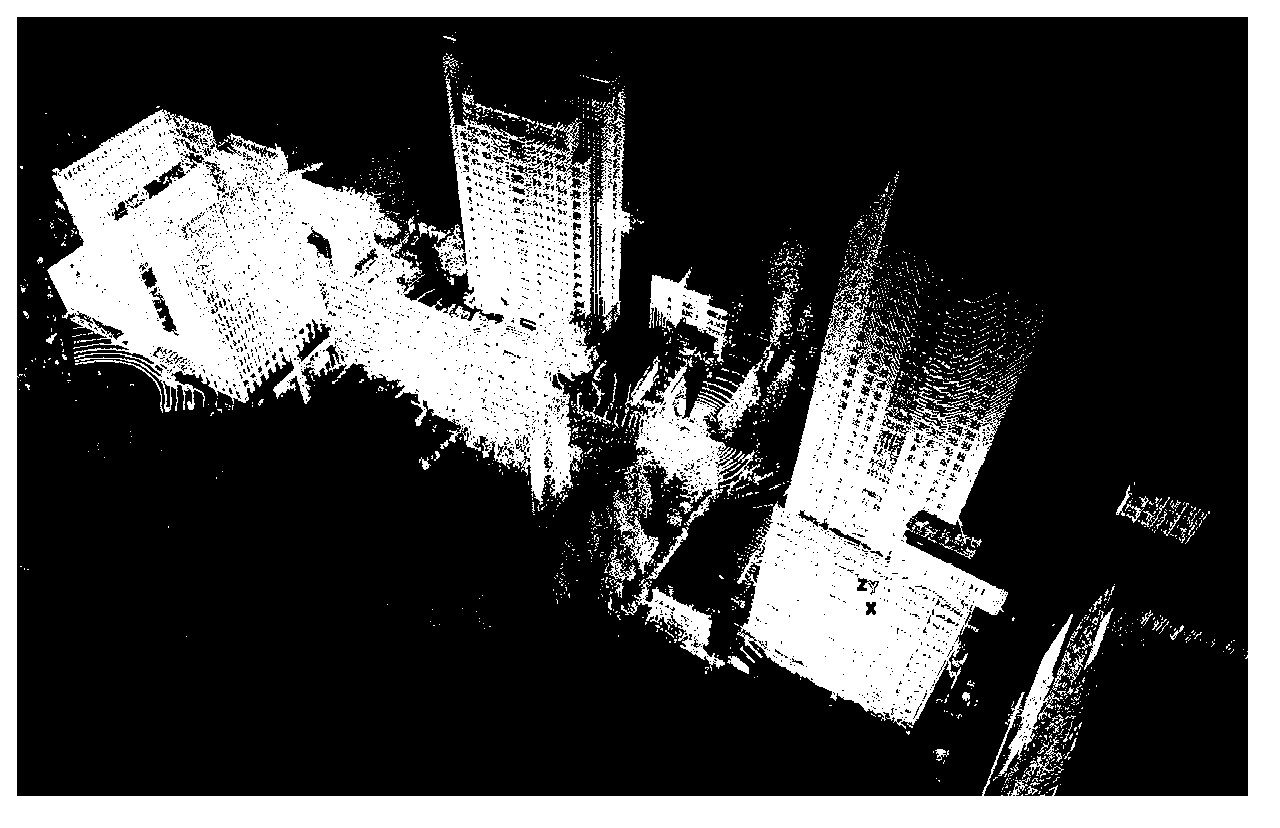Method for extracting contour and corner of building from ground LiDAR data
A building and outline technology, applied in the field of extracting building outlines and corner points, can solve the problems of affecting clustering results, large errors and computations, and relying on initial seed areas, so as to improve data processing efficiency and accuracy. Effect
- Summary
- Abstract
- Description
- Claims
- Application Information
AI Technical Summary
Problems solved by technology
Method used
Image
Examples
Embodiment Construction
[0041] The ground LiDAR data of this embodiment is such as figure 1 shown. The data was scanned by Leica ScanStation2 and 9 stations. The total number of LiDAR points is about 30 million, and the resolution of ground LiDAR points is 20cm at a distance of 100m.
[0042] From the example of this example figure 1 A method for extracting building outlines from ground LiDAR data, comprising the steps of:
[0043] 1a) Project the ground LiDAR point cloud to the XY plane—project the ground LiDAR point cloud to the XY plane of the three-dimensional coordinate system, and retain the X, Y, and Z attributes of each point.
[0044] 1b) Extract a rough outline grid—construct a 1m*1m rough grid in the XY plane (see figure 2 ), calculate the number of LiDAR projection points in each rough grid, that is, get the grid density of the rough grid, filter the rough grid according to the rough grid density threshold at the edge contour of the building, and keep the grid A rough grid whose dens...
PUM
 Login to View More
Login to View More Abstract
Description
Claims
Application Information
 Login to View More
Login to View More - R&D
- Intellectual Property
- Life Sciences
- Materials
- Tech Scout
- Unparalleled Data Quality
- Higher Quality Content
- 60% Fewer Hallucinations
Browse by: Latest US Patents, China's latest patents, Technical Efficacy Thesaurus, Application Domain, Technology Topic, Popular Technical Reports.
© 2025 PatSnap. All rights reserved.Legal|Privacy policy|Modern Slavery Act Transparency Statement|Sitemap|About US| Contact US: help@patsnap.com



